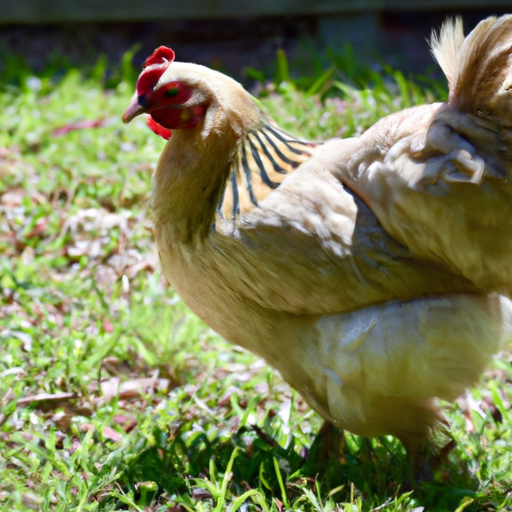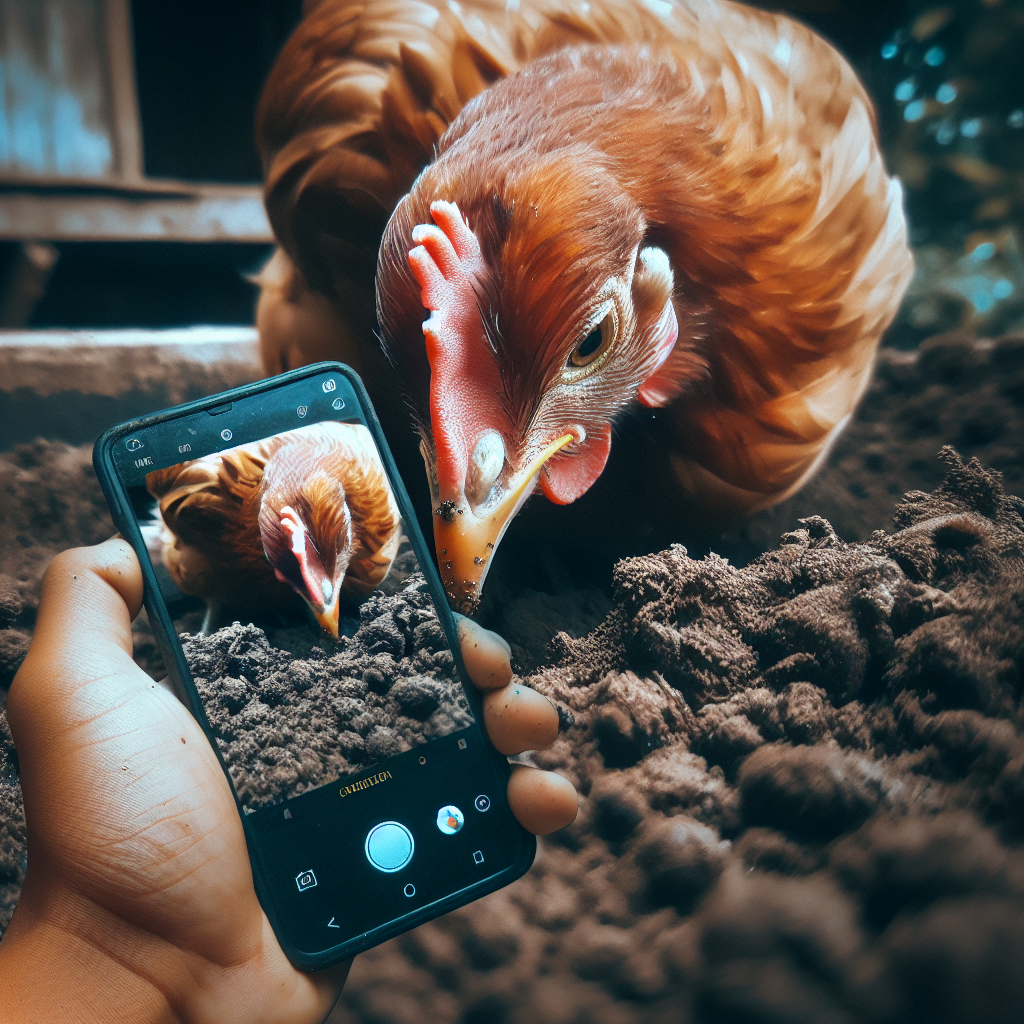In today’s ever-evolving food industry, consumers are becoming more conscious about the ethical implications of the farming methods used to raise the animals that end up on their plates. With the rise of terms like “free-range,” “cage-free,” and “pastured-raising,” it can be overwhelming to decipher the differences and understand which method aligns better with your personal values. This article aims to shed light on these three popular farming practices and give you a clearer understanding of their ethical implications. So, fasten your seatbelt and embark on a journey of ethical exploration!
1. What are free-range, cage-free, and pastured-raising methods?
1.1 Free-Range Method
The free-range method refers to a farming practice where animals, such as chickens, are allowed to roam freely outdoors, with access to both indoor and outdoor areas. This method ensures that animals have the opportunity to engage in natural behaviors, such as foraging for food and getting adequate exercise. Free-range animals are typically provided with shelter and protection from predators, but they have more freedom of movement compared to animals in conventional farming systems.
1.2 Cage-Free Method
The cage-free method involves keeping animals, usually poultry, without confinement in cages. Instead, they are housed in open barns or other indoor environments, where they have more space to move around compared to traditional battery cages. While cage-free systems do not provide the same level of outdoor access as free-range systems, they still offer animals the ability to exhibit more natural behaviors, such as walking, spreading their wings, and nesting.
1.3 Pastured-Raising Method
Pastured-raising, also known as pasture-based or grass-fed farming, allows animals to graze on pastureland for a significant portion of their lives. This method is commonly used for cattle, sheep, and goats, but it can also be applied to poultry. Pastured-raised animals have ample space to roam, graze on grass, and engage in natural behaviors, contributing to their overall health and welfare. This method provides animals with a more natural and environmentally friendly way of obtaining their food.
2. Ethical considerations in livestock farming
2.1 Animal Welfare
Animal welfare is an important ethical consideration in livestock farming. It encompasses the physical and mental well-being of animals, ensuring they are not subjected to unnecessary suffering or distress. Promoting animal welfare involves providing animals with proper nutrition, veterinary care, freedom from pain and discomfort, and the ability to express their natural behaviors.
2.2 Environmental Impact
The environmental impact of livestock farming is another crucial ethical aspect to consider. Traditional intensive farming practices can contribute to soil degradation, water pollution, deforestation, and greenhouse gas emissions. Ethical farming methods should prioritize sustainable practices that minimize environmental harm and promote biodiversity conservation.
2.3 Health and Safety of Consumers
The health and safety of consumers are paramount considerations in ethical livestock farming. This involves producing safe and nutritious food while minimizing the use of antibiotics and hormones that may have adverse effects on human health. It also includes ensuring proper food safety measures are in place to prevent the transmission of foodborne illnesses.
2.4 Economic Factors
Economic factors also play a role in the ethical considerations of livestock farming. It’s important to evaluate the economic viability of different farming methods to ensure farmers can maintain their livelihoods and have a sustainable income. Additionally, market demand and consumer affordability are important factors to consider, as ethical farming practices should be accessible to a wide range of consumers.
3. Comparison of ethical aspects between free-range, cage-free, and pastured-raising methods
3.1 Animal Welfare
When it comes to animal welfare, all three methods, free-range, cage-free, and pastured-raising, have advantages over conventional intensive farming systems. Animals in these methods are generally given more space to move and engage in natural behaviors, which enhances their welfare. However, there are differences in the level of outdoor access and the specific opportunities for natural behaviors each method provides.
Free-range systems offer animals the most freedom of movement and a greater range of natural behaviors. Animals have access to both indoor and outdoor spaces, allowing them to explore, forage, and experience a more varied environment. Cage-free systems, while not providing outdoor access, still give animals more space to move and express natural behaviors within indoor environments. Pastured-raising also allows animals to engage in natural behaviors through grazing and outdoor access but is more commonly practiced for certain livestock species like cattle and sheep.
3.2 Environmental Impact
In terms of environmental impact, free-range and pastured-raising methods generally have lower negative effects compared to cage-free and conventional intensive farming. The grazing habits of animals in free-range and pastured-raising systems contribute to natural fertilization of soil, reduce the need for synthetic fertilizers, and promote healthier ecosystems. Additionally, these methods usually have lower energy inputs and produce fewer greenhouse gas emissions. Cage-free systems, while an improvement over conventional battery cages, still require more resources for indoor housing and waste management compared to outdoor-based systems.
3.3 Health and Safety of Consumers
All three methods, free-range, cage-free, and pastured-raising, have potential benefits for the health and safety of consumers. These methods generally involve lower use of antibiotics and hormones compared to intensive farming systems. Free-range and pastured-raised animals are more likely to have diets consisting of natural and varied foods, which may contribute to higher nutritional value. However, it’s important to note that proper food safety practices should be followed in all farming methods to minimize the risk of foodborne illnesses.
3.4 Economic Factors
When considering economic factors, free-range and cage-free systems often require more resources and infrastructure compared to conventional intensive farming methods. This can result in higher production costs, which may be reflected in the price of products for consumers. Pastured-raising can also have higher production costs due to the need for ample grazing land. However, consumer demand for ethically produced food has been increasing, which may help offset some of these costs. Balancing economic viability with ethical considerations is essential to ensure the long-term sustainability of farming practices.
4. Animal Welfare
4.1 Freedom of Movement
Freedom of movement is a key aspect of animal welfare, and all three methods, free-range, cage-free, and pastured-raising, provide animals with more freedom compared to conventional intensive farming. Free-range systems offer the greatest level of movement as animals have indoor and outdoor access, allowing them to roam, explore, and engage in natural behaviors. Cage-free systems provide animals with more space within indoor environments, allowing them to walk and spread their wings. Pastured-raising also allows animals to move freely within the grazing areas, promoting physical and mental well-being.
4.2 Natural Behaviors
Promoting natural behaviors is crucial for animal welfare, and all three methods prioritize this to varying degrees. Free-range systems offer animals the most opportunities to exhibit natural behaviors, as they have access to outdoor spaces where they can forage, dust bathe, and socialize. Cage-free systems, while lacking outdoor access, still allow animals to engage in some natural behaviors within indoor environments, such as nesting and perching. Pastured-raising enables grazing animals to exhibit natural grazing behaviors, enhancing their welfare.
4.3 Psychological Well-being
Psychological well-being is an important consideration for animal welfare. Free-range systems, with their access to both indoor and outdoor spaces, provide animals with a more varied and stimulating environment, promoting positive mental states. Cage-free systems also offer animals more space to move and engage in natural behaviors, which can contribute to psychological well-being. Pastured-raising allows animals to experience a more natural way of living, which can positively impact their mental health.
4.4 Veterinary Care
Regardless of the farming method, ensuring access to proper veterinary care is essential for animal welfare. This includes regular health checks, disease prevention, and prompt treatment when needed. All three methods should prioritize the health and well-being of animals by providing appropriate veterinary care to prevent and treat ailments.
5. Environmental Impact
5.1 Land Usage
Land usage is an important environmental consideration in livestock farming. Free-range and pastured-raising methods generally require more extensive land usage compared to cage-free and conventional intensive systems. Animals in free-range systems have access to both indoor and outdoor areas, requiring ample space for them to roam and forage. Pastured-raising also requires large areas of land for grazing to provide animals with a varied diet. Cage-free systems, on the other hand, require more space within indoor environments but have a smaller footprint in terms of land usage.
5.2 Waste Management
Waste management is a significant environmental concern in livestock farming. Free-range and pastured-raising systems often have more environmentally friendly waste management practices compared to conventional intensive systems. Animals in free-range systems have the opportunity to spread their waste naturally in outdoor environments, which can contribute to soil fertility. In pastured-raising, the animals’ waste fertilizes the grazing land, promoting healthy soil. Cage-free systems typically require more intense waste management strategies, as animals are housed indoors, necessitating proper disposal methods for manure.
5.3 Sustainable Practices
Sustainability is a key ethical consideration in livestock farming, and all three methods have the potential to implement sustainable practices. In free-range and pastured-raising systems, animals contribute to natural fertilization, reducing the need for synthetic fertilizers. These methods often involve lower energy inputs and may have a smaller carbon footprint compared to intensive farming. Cage-free systems can also adopt sustainable practices by implementing efficient waste management and utilizing renewable energy sources for indoor housing.
5.4 Biodiversity Conservation
Promoting biodiversity conservation is important for the long-term sustainability of livestock farming. Free-range and pastured-raising methods, with their focus on outdoor access, can have a positive impact on biodiversity. Grazing animals in pastured-raising systems can contribute to maintaining diverse ecosystems, while free-range animals often interact with their natural surroundings, potentially supporting biodiversity conservation. Cage-free systems, although lacking outdoor access, can still implement measures to promote biodiversity within indoor environments, such as providing enrichments and natural materials for animals.
6. Health and Safety of Consumers
6.1 Antibiotic Use
Reducing the use of antibiotics is an important aspect of ethical livestock farming to mitigate the risk of antibiotic resistance and protect human health. Free-range and pastured-raising methods generally involve lower antibiotic use compared to conventional intensive systems. With more natural and varied diets, animals in these methods often have stronger immune systems, reducing the need for antibiotics. However, it’s crucial to prioritize responsible antibiotic use in all farming methods to ensure animal health and prevent the spread of antibiotic-resistant bacteria.
6.2 Hormone Use
Minimizing hormone use is another ethical consideration in livestock farming. Both free-range and pastured-raising methods typically involve little to no hormone use due to the focus on natural and sustainable production practices. Cage-free systems, while not directly related to outdoor access, may also limit hormone use as part of their commitment to ethical farming practices. Reducing hormone use is important to ensure food safety and consumer confidence.
6.3 Food Safety
Ensuring food safety is a critical ethical aspect in livestock farming. All three methods, free-range, cage-free, and pastured-raising, can produce safe food when proper food safety measures are followed. It’s important to implement rigorous hygiene practices throughout the entire production process and adhere to applicable regulations. Consumer confidence in the safety of the food they consume plays a crucial role in the ethical considerations of livestock farming.
6.4 Nutritional Value
The nutritional value of the food produced in different farming methods is an essential consideration for consumer health and well-being. Free-range and pastured-raised animals often have diets that include a wider range of natural foods, which can result in higher nutritional quality. These methods can lead to products with higher levels of beneficial nutrients such as omega-3 fatty acids and vitamins. Cage-free systems can also produce nutritious food, but the specific dietary composition may vary depending on the feed provided.
7. Economic Factors
7.1 Cost of Production
The cost of production is a significant economic consideration in livestock farming. Free-range and cage-free systems generally involve higher production costs compared to conventional intensive farming methods due to the additional requirements for outdoor access or more spacious indoor environments. Pastured-raising can also be more expensive due to the need for large grazing areas. These higher costs can impact the price of products for consumers, making them relatively more expensive compared to conventionally produced alternatives.
7.2 Market Demand
Consumer demand for ethically produced food has been steadily increasing, which can impact the economic viability of different farming methods. Free-range, cage-free, and pastured-raised products are often in higher demand among consumers who prioritize animal welfare, environmental sustainability, and food safety. As consumer preferences shift towards ethical choices, the market demand for these products continues to grow, creating opportunities for farmers to cater to this demand and potentially achieve higher prices for their products.
7.3 Livelihood of Farmers
The economic viability of different farming methods directly affects the livelihoods of farmers. While free-range, cage-free, and pastured-raising systems may have higher production costs, they can also offer farmers a niche market and the potential for higher profits. However, it’s important to assess the economic sustainability of these methods in the long term to ensure farmers can maintain their livelihoods and continue to produce ethically sourced food. Balancing economic factors with ethical considerations is crucial for the well-being of farmers and the overall sustainability of the agricultural industry.
7.4 Consumer Affordability
Consumer affordability is an important economic factor to consider when evaluating different farming methods. While ethical farming practices are desirable, it’s essential to ensure that the resulting products remain accessible to a wide range of consumers. Higher production costs associated with free-range, cage-free, and pastured-raising methods can result in higher prices for these products. Balancing affordability with ethical considerations is important to avoid exclusivity and ensure that ethically produced food is accessible to as many people as possible.
8. Key differences and similarities in ethical considerations
8.1 Advantages of Free-Range
Free-range methods provide animals with the highest level of freedom of movement and the opportunity to engage in a wide range of natural behaviors. This promotes animal welfare and biodiversity conservation. Free-range systems can also have lower environmental impact and offer products with potential higher nutritional value. However, higher production costs and potential challenges in large-scale implementation may impact affordability and market availability.
8.2 Advantages of Cage-Free
Cage-free systems provide animals with more space and the ability to engage in important natural behaviors, such as nesting and perching. They offer a balance between animal welfare and economic factors since they typically have lower production costs compared to free-range and pastured-raising methods. Cage-free systems can also meet consumer demands for ethically produced food while promoting safer and more nutritious products. However, the lack of outdoor access may limit certain natural behaviors and their positive impact on the environment.
8.3 Advantages of Pastured-Raising
Pastured-raising methods allow animals to graze on pastureland, which supports natural behaviors and promotes animal welfare. Grazing animals in pastured-raising systems can have positive impacts on soil health, biodiversity, and sustainable land use. These methods often align with consumer preferences for environmentally friendly and high-quality products. However, the need for extensive grazing areas can limit scalability and potentially increase production costs.
8.4 Disadvantages of Free-Range
Free-range systems can have higher production costs and potentially limited market availability due to the resources required for outdoor access and larger housing spaces. The challenges in large-scale implementation may affect consumer affordability. Additionally, the greater exposure to outdoor environments may pose risks, such as increased disease transmission and predation, which need to be properly managed.
8.5 Disadvantages of Cage-Free
While cage-free systems provide animals with more space compared to conventional intensive farming, they still lack outdoor access. The absence of outdoor environments may limit certain natural behaviors and negatively impact animal welfare. Cage-free systems also require proper waste management practices and energy inputs for indoor housing, which can contribute to environmental concerns.
8.6 Disadvantages of Pastured-Raising
Pastured-raising methods can require extensive land usage for grazing, which may limit scalability and availability. The need for large grazing areas also adds to production costs and can present economic challenges for farmers. Additionally, certain livestock species, such as poultry, may not be as suitable for extensive grazing, which could restrict the application of this method.
9. Consumer Awareness and Choice
9.1 Impact of Labeling
Consumer awareness and understanding of different farming methods are crucial for making informed choices. Accurate and transparent labeling is important to assist consumers in identifying and selecting products that align with their ethical values. Proper labeling should clearly indicate the farming method used, such as “free-range,” “cage-free,” or “pastured-raised,” allowing consumers to make informed decisions based on their preferences.
9.2 Ethical Considerations in Purchasing
When purchasing animal products, consumers can consider various ethical factors, such as animal welfare, environmental impact, and food safety. Understanding the different farming methods and associated ethical considerations enables consumers to support practices that align with their values. By choosing products from systems that prioritize animal welfare, environmental sustainability, and safe production, consumers can contribute to the demand for ethically sourced food.
9.3 Supporting Sustainable Practices
Supporting sustainable farming practices involves considering the environmental impact of different farming methods and opting for those that minimize ecological harm. Consumers can choose products from free-range, cage-free, or pastured-raised systems that promote biodiversity conservation, minimize waste, and use sustainable resources. By supporting sustainable practices, consumers can contribute to the long-term health of ecosystems and their own well-being.
9.4 Balancing Ethics and Affordability
Finding a balance between ethics and affordability is an important consideration for consumers. While ethically produced food is desirable, it should also be accessible to a wide range of consumers. Understanding the cost implications of different farming methods and considering individual budgets can help strike a balance between supporting ethical practices and maintaining affordability. Consumers can also explore local and seasonal options, which can often offer both ethical and cost advantages.
11. Conclusion
11.1 Overall Ethical Implications
Free-range, cage-free, and pastured-raising methods offer improvements in animal welfare, environmental impact, and consumer health and safety compared to conventional intensive farming. These methods provide opportunities for animals to engage in natural behaviors, promote biodiversity conservation, reduce the use of antibiotics and hormones, and potentially offer products with higher nutritional value. However, each method has advantages and disadvantages, with differing requirements and considerations in terms of production costs, market demand, and scalability.
11.2 Importance of Informed Consumption
Consumers play a crucial role in influencing the farming industry by making informed choices and supporting practices that align with their ethical values. Understanding the various farming methods and associated ethical considerations empowers consumers to make conscious decisions that contribute to animal welfare, environmental sustainability, and food safety. Through informed consumption, consumers can encourage the adoption of more responsible farming practices.
11.3 Encouraging Responsible Farming
Promoting responsible farming involves a collective effort from consumers, farmers, and regulatory bodies. Consumers can demonstrate their support for ethical farming practices by purchasing products from free-range, cage-free, and pastured-raising systems. Farmers can adopt sustainable methods, prioritize animal welfare, and implement proper waste management practices. Regulatory bodies can develop and enforce standards that prioritize ethical considerations in livestock farming. By working together, we can foster a more responsible and sustainable agricultural industry.
11.4 Striving for Continuous Improvement
As the understanding of ethical considerations in livestock farming evolves, continuous improvement is essential. Agriculture is a dynamic field, and there is always room for progress. Encouraging research, innovation, and knowledge sharing can drive improvements in animal welfare, environmental impact, and consumer health and safety. By striving for continuous improvement, we can ensure that ethical considerations remain at the forefront of the livestock farming industry, benefiting animals, the environment, and society as a whole.




